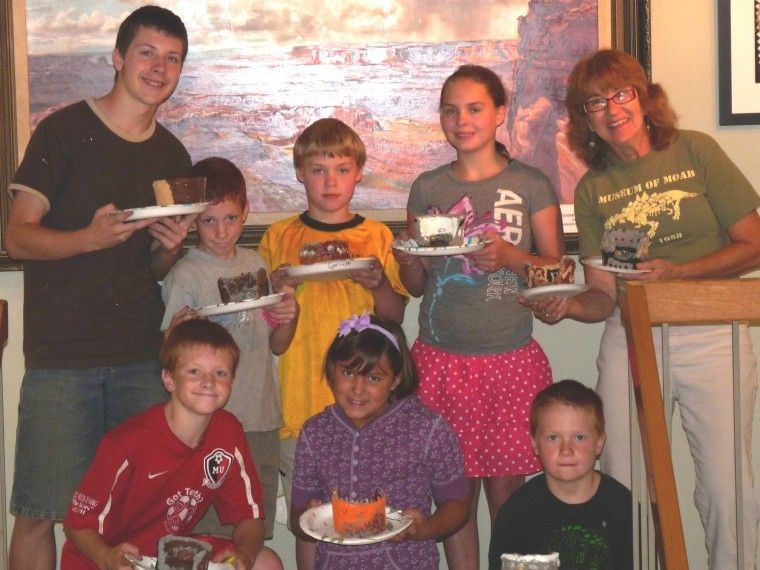Few places in the world are as rich in geological, biological and anthropological artifacts as Moab, and the Museum of Moab is hoping that young people in the community will find inspiration in their home’s epic story as its educational programming returns this spring.
Museum of Moab Education Program Coordinator Andrea Stoughton has returned from a hiatus managing a campsite in the La Sal Mountains to reestablish structured educational programming for the facility. With more than three decades of classroom and environmental education teaching experience, Stoughton has spent years developing grade-appropriate curriculum for the museum, and she said she is looking forward to seeing high numbers of young people in the visitor’s log again.
“It really helps the teachers,” she said. “They can walk over from any of the schools in the area and drop in; all they have to do is sit with the kids. Teachers have so much on their plates already right now. Here, they can just come in and say, ‘Ah, maybe I’ll learn something today.’”
The entire program is designed to complement common core activities in public school classrooms, Stoughton said.
It aims to give students a new perspective on the region’s environment and history at every age, starting with a “touch tour” of the museum for preschoolers, and continuing through each grade level to explore each of the museum’s key topics.
From dinosaurs to Native American history and culture, to recent human economic activities and the science and art of archeology and anthropology, the curriculum presents Moab’s story through activities and narratives crafted for young audiences.
“More than anything, it really shows the students the purpose and importance of historical documentation and archaeology,” Helen M. Knight Elementary sixth-grade teacher Kristi Nichols said.
Nichols took her students to the museum regularly in the past and said she’s looking forward to scheduling a visit before the end of the school year now that the program is coming back.
Stoughton spearheaded the creation of the educational program in 2010 and taught multiple classes to more than 100 students daily during the busy season from 2011 to 2014.
The program was suspended when leadership changed, as Museum of Moab Director John Foster established new exhibits and began directing a new vision for the museum. As the museum’s board honed its five-year plan for expansion, reestablishing educational programming was a first priority, Foster said.
“It’s something that’s been missing for two years,” he said. “Really, we needed to do it all along.”
A new museum space is being planned for construction within the next several years, Foster said, and part of the impetus for reestablishing educational programming was to inspire ideas for the design of classrooms and a presentation room.
The current museum building is short on space for instruction and for exhibits, he said. In addition to overcrowding, the lack of environmental controls in the current building prevents the museum from attaining repository status. Repository status allows active, targeted collection of archaeological materials, Foster said.
“There are things from around here that can’t be exhibited here,” he said. “To bring them here is more complex when we’re borrowing them from out of state.”
The board and staff of the museum are hopeful that as more students attend programming at the museum, they’ll go home and spread the word to parents and friends about this unique community asset, Foster said. The opportunity to strengthen a connection to the land and its rich human heritage extends not only to the local community, but also to its millions of annual visitors, he said.
“More so than most places I’ve worked, the landscape here has influenced human history,” he said. “We want to design exhibits so those connections are featured.”
Ultimately, he hopes that those who live and play in Moab will choose to visit the museum early, and as they head out to enjoy themselves in the high desert wilderness, carry with them a sense of just how special a place it really is.
Popular educational program returns this spring
“It really helps the teachers … They can walk over from any of the schools in the area and drop in; all they have to do is sit with the kids.”




